The antique adage “one person’s tat is another person’s treasure” often echoes among tool collector communities. Sometimes to disguise a desire. Sometimes to justify a purchase. Or sometimes to simply convince themselves they need to keep something they probably shouldn’t… And when, over the last 100 years, millions and millions of tools have been created, you can probably imagine how loud these echoes become.
As you’d expect, some of these tools last, and some of them don’t.
Today, we’re going to hone in on the tools that have lasted and, in particular, those you could potentially sell for a pretty penny. (Think the Shakespeare of screwdrivers, the Picasso of planes or the Hemingway of hand saws). Because if you’re looking to invest or collect some of the most valuable antique tools, it’s probably wise to know what’s valuable and what’s not.

Picasso and a plane, courtesy of AI…
Putting a price on value
If it weren't for tools, you wouldn’t be here reading this on your phone or laptop. In fact, if it weren't for tools (and humanity’s innate curiosity in them) you might not even exist altogether. So when tools have played such an important - and maybe overlooked - role in our society’s development, it’s not really surprising that we’re still obsessed with them.
With obsessors comes collectors. And for collectors to spot potential investment opportunities, they need to rely on something other than gut instinct. They need a way of identifying value.
The two types of antique tool value
You might be a full-time antique tool collector or a mere collecting enthusiast. Nevertheless, if you’re looking to find some of the most valuable antique tools, you need a way of justifying your purchase, or decision to keep it for “just one more year”.
There are two types of value, and the first type is sentimental. If you see something you like and you want to collect it, then you should. Sentimental value is as worthy as any other reason to buy an antique tool. It’s your collection, after all. Whether you’d see an ROI on your Grandma’s second-favourite spade, however, is a different story.
Because the second type of value is more investment-focused and would certainly influence your decision to respect and collect Grandma’s spade or politely pass and sell it. This type of value is the market value - i.e. what others think the tool is worth. And for the rest of the article, this is the type of value we'll focus on.
A tangible connection to the past
Before we look at what the most valuable antique tools are, we need to know what made them so. To answer this, we need to understand how antique tools just magically seem to enter the 3 digits on the back of your credit card and arrive the next day via special delivery.
Well, in essence, antique tools represent a connection to the past. A connection you can hold in your hands (or, in Grandma’s case, dig holes with) and to collectors and valuers that’s important. Some tool tools might epitomise a certain craft or symbolise important milestones in tool development.

Our Driver came from the desire to keep some of the past in the present
If we then dissect what a “connection to the past” actually means, we find some of the more important factors that influence antique tool value. Let’s take a look and see what these valuation methods and variables are.
(Of course, it’s important to remember these factors fluctuate in importance because, like a squirrel on a bouncy castle, a market is never static.)
Antique tool value factor: Age
Up first, and maybe the most obvious factor in influencing antique tool value, age. The older, the cooler. Because tools have evolved a lot - we’ve gone from hand-chipped bits of stone to CNC machines. So different eras of tools symbolise different milestones of craftsmanship - and naturally, some are more important (and hence valuable) than others.
Antique tool value factor: Rarity
All else being equal, generally, the fewer that exist, the more they’re worth. But existence levels aren’t just a matter of whether they’ve rotted away or randomly combusted. Sometimes, there just aren’t that many to begin with. Handmade tools or limited runs will affect volume, and unique features, by definition, mean there’s only one.
Antique tool value factor: Physical attributes
The next factor that influences antique tool value is what the tool physically consists of. There are a few layers to look at.
Your antique tool might showcase a Liam Neeson special: "a very particular set of skills" or artistic design that makes your tool a lot rarer. For example, a handsaw with intricate carvings on the handle or a plane with delicate inlays. If these skills or artistic flare come from someone recognisable, then this will only make the tool more desirable, collectable and valuable.
Alongside aesthetics, you also have the tool’s material. Quality (or rare) materials will again impact the tool’s value - especially materials no longer used in tooling. It’s not impossible to find antique tools that use more exotic materials like rosewood, ebony, boxwood or even ivory. Not only does this make a tool less common, but it also signals that the ‘penny counters’ haven’t intervened and calculated the quality out of the build.
Antique tool value factor: Heritage
Who made ‘em, where did they come from, and what stories can they tell?
RI Antiques brings up a good example of a tool story and the “painstakingly handmade [tools] from whale bone by early seamen” - whose beauty transcends functionality.
If a well-respected craftsman, designer or artist played a role in the tool development, then their reputation will likely rub off onto the tool's value. Why? Well, there’s nothing crafts-folk appreciate more than caressing (or using…) an era-defining tool. (Rumour has it, it makes you more creative…). Of course, famous owners or users will also impact market value. Because, think, what would you rather own: my garden paintbrushes or da Vinci’s?
In a similar stroke, notable events or tool stories will play a role too. Picture this: it’s a warm, sunny Saturday afternoon. Your friends are around. The BBQ is sizzling away. You’ve got a small paddling pool to keep your feet cool - it couldn’t possibly get any better. And then you remember… tucked away in the corner of your shed, you’ve got one of the rivet guns that inserted some of the 18,038 iron pieces in the Eiffel Tower.
Antique tool value factor: Condition
*Hands over a bag of wood and rusty chisel blade dust* “This is Michelangelo’s favourite chisel. How much is it worth?” Errr…
The condition of the tool will always be a factor that influences antique tool value. Something that works - or could work if you wanted to use it - is almost always going to be worth more than its broken-up, bag-o-dust equivalent. An antique plane that can still shave bits of wood like a hot knife through butter is not only prized as a collectible but also a functional tool.
Antique tool value factor: Authenticity
Generally speaking, unaltered, genuine tools will be more desirable than their bodged-up counterparts. Collectors tend to prefer to see natural signs of ageing vs squeaky-clean presentations.
If you have documentation to verify your antique tool's authenticity, then this will only add further value (and better ride the fluctuations of market value).
Antique tool value factor: Summary
So, yes, as you can see, there are lots of factors that influence antique tool value, and there are likely many, many more that factor into antique tool appraisal methods. But if we were to summarise these variables and give you one solid piece of advice, it would be this: steer away from damaged or suspiciously clean tools and lean into tools that look different.
A blast from the past: Historically valuable tools
Okay, so now we know what the market (generally) deems valuable and how they deem it so. Your next question would be, what are the most valuable antique tools? Or better still, what might you be able to sell some of your antique tools for?
As we know, market value fluctuates, so take what you read here with a pinch of salt. What sold for this might not sell for it again. But historically, these are some of the higher antique tool auction prices and some that might be…
Norris planes
Before WW2, Norris planes were considered ‘the Rolls Royce of hand planes’. They used exceptional materials and craftsmanship – like a Brazilian Rosewood infill and elegant dovetail steel construction.
In 1913, Norris patented his micrometre-like blade adjuster (which was very popular among woodworkers). So not only were they a quality build that required very little repair, but they were an era-defining tool too.
It comes as no surprise then that early Norris planes are serious collector items. For example, Jim Bode Tools has sold Norris No.5 planes for $2000+ (others have even sold for over $10,000!), and OldTools sells other Norris planes frequently valued above £500.
Stanley tools
Some of the early Stanley tools, in particular their planes, are very sought after among tool collectors.
Many are eye-catching and use high-quality and rare materials. According to Stanley, these materials consisted of Brazilian Rosewood, ebony and ivory (maybe inspiring the Paul McCartney song?).
But Stanley tools are quite common among tool collectors. And commonality and antique tool value don’t really go hand in hand. So why are they so popular? Well, they’re easy to identify and somewhat consistent in value, so they’re a safe early investment into antique tool collections.
As Stanley gradually shifted towards efficiency over effectiveness, however, tool quality began to drop, and they became less collectable.
An example could be this Antique Stanley USA No.71 Router Plane, which is valued at $250. It’s not quite as expensive as the $2500 Norris planes, but still a sharp amount.
Disston saws
Like many valuable antique tools, Disston were known for their quality, durability and ability to cut through wood like ice cream.
Granted, they haven’t sold for Norris prices, but you’d still get a good cut of money if you sold one. The D43 hand saw here (valued at $195) used mahogany for the handle alongside some wonderful, intricate engravings. . Other Disston saws used rosewood, apple, beech and walnut too.
There’s a great article on Disston saws here if you’re curious.
Gold-plated, ivory-handled wrench
This interesting wrench was allegedly a gift to the New York Central Railroad System president, Chauncey Depew. At auction, a buyer parted with $5,980 to add this to their collection.
But what’s vital to its value is that it comes with an unfortunate story… because whilst it was meant to be a wonderful, personalised gift, it ended up just being wonderful because the engraver misspelt Depew’s name on it.
It’s the thought that counts, though, eh?
Aciera machines
Although many aren’t quite antique yet, there are conversations online that some of the late vintage Aciera milling machines are rising in value and desirability. Founded in 1903 (Le Locle, Switzerland), Aciera were prevalent in small, high-precision mechanical timepieces. Prices are TBC because there aren’t many about, nor have many sold yet. Here’s a rare example of an Aciera F11 milling machine.
Winchester tools
For Winchester Repeating Arms Company, we look more towards the “Heritage” side of market value variables. Winchester was primarily a long gun manufacturer, but for a little while, they made some tools (including these wrenches). Tools that are now very hard to come by…
And because it’s also an odd or unexpected product from an already very collectable arms manufacturer, these, too, are very collectable. Prices don’t shoot to the stars (at the moment, at least), but they are historically significant.
Before you buy and sell antique tools
So, if you’ve got something antique or you think you’ve found something worth a penny or two, here’s some guidance on what to do before you buy or sell it.
Research. Research again. And then research some more.
Timing is particularly important because it drastically influences market value and what people are willing to pay. Without first accumulating some data, you won’t know whether the value of your tools is high or low. Research lets you gauge trends and determine relative value.
Check Authenticity’s ID
Look for maker’s marks, documentation original finishes and signs of ageing that are consistent with the tool’s history and purpose. Give it a good sniff. Can you smell the blood, sweat and tears of a fellow engineer or artisan that has gone into using it?
Keep it safe (but probably not in one)
While you decide whether to sell or not, make sure you keep your ambitious retirement plan somewhere safe - ideally in a dry, stable environment. Remember, natural ageing is somewhat expected, but suspicious cleanliness or avoidable damage might mean you’ll have to work longer than you hope.
Collect collector communities
There’s no denying that antique tool valuation methods are difficult and inherently subjective. So fresh sets of eyes (and opinions) are worth their weight in gold. Collector communities are an easier way to gauge market trends and determine current value. If you’re not sure where to begin, our CubeClub Forum is full of wonderful people always willing to help.

Come say "Hi!"
A fresh way to use old tools
So there you have it, a solid understanding of why tangible links to the past are so valuable - and what some of the most valuable antique tools are. Should you wish to collect or invest in antique tools, hopefully, now you’ll feel confident enough to start your journey and join us in keeping old ways of doing things fresh, alive and forever in our toolboxes.
For some of our own takes on historical techniques and mechanisms, take a look at:
- The MetMo Driver and Pocket Driver (inspired by Conrad Baumann’s 1950s ratchet driver)
- The recent MetMo Multi Drive, which revitalises a 150+ year-old machine collet system.

The MetMo Driver
And again, if you have any questions or insights about antique tools, we’d love to hear them. Come join us in our CubeClub Forum and tell us all about it.
See you in the next one!



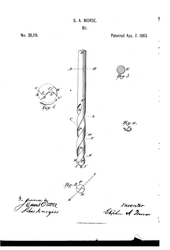
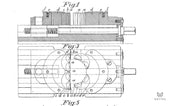

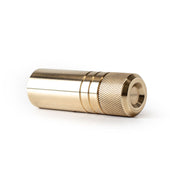
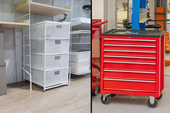
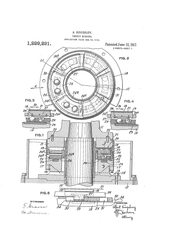
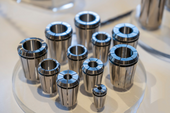
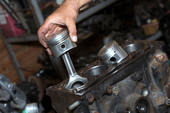
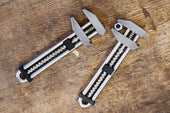
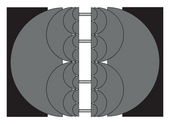
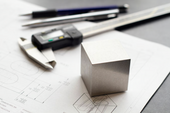
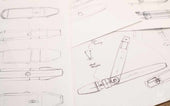

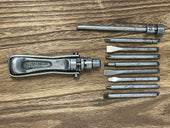
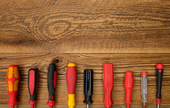
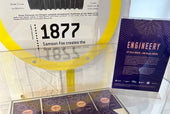
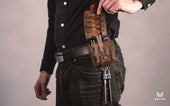
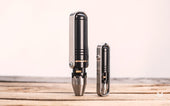
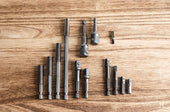
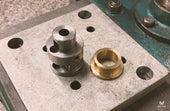
Share:
Pocket Driver: Pre-Production Run
Time to Inspect(y)or Gadget...